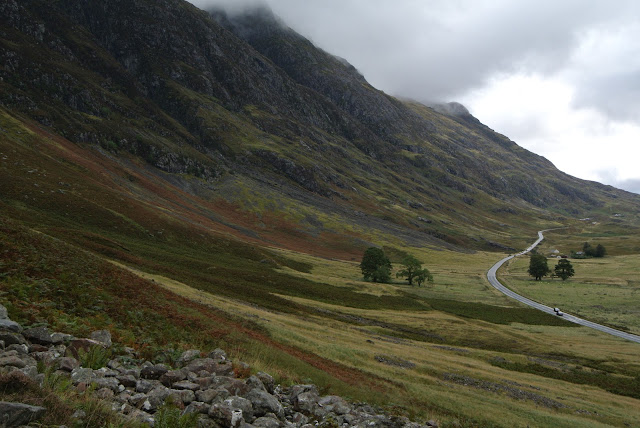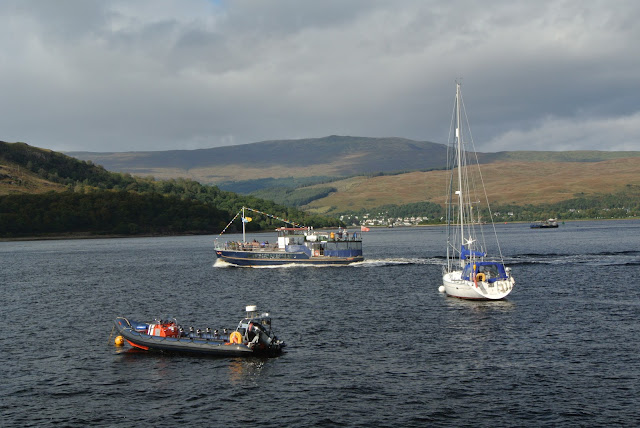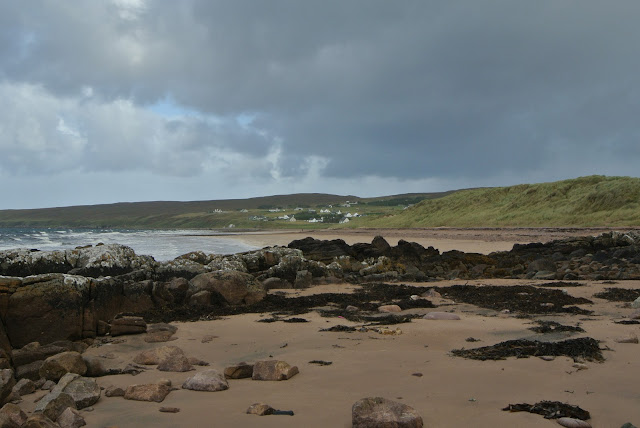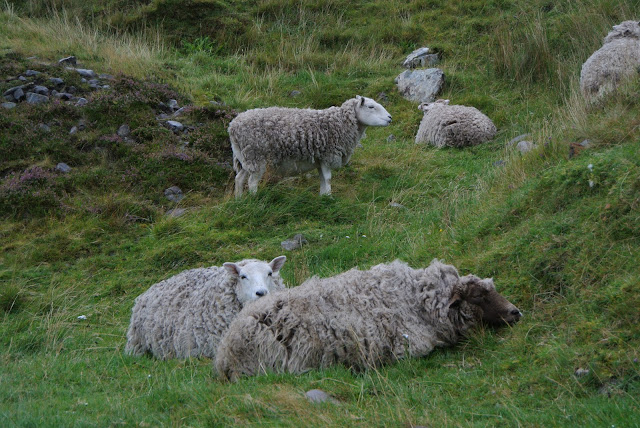Scotland 2019 started off with a four-night stay
in Gairloch in the beautiful West Highlands. From an early age, it is a location I grew to admire, love and never forget.
Our drive there took us through Glen Coe, which is probably
Scotland’s most famous and most scenic Highland glen. I have always been inspired
by the sheer scale and grandeur of its surrounding mountains and fascinated by
the intrigue of its turbulent past. For me Glen Coe is always best viewed when it is
raining heavy, to see what my dad often described as the surrounding mountains
shedding their tears, this being the many streams and waterfalls cascading from
the great heights into the fast flowing rivers below.
Leaving the magnificence of Glen Coe, the next
stop was Fort William which in Scottish Gaelic is An Gearasdan or in English translates
to "The Garrison". It is a town in Lochaber in the Scottish
Highlands, located on the eastern shore of Loch Linnhe. Now a major tourist
centre, with Glen Coe just to the south, Ben Nevis and Aonach Mòr to the east
and Glenfinnan to the west and is on Road to the Isles.
 |
| Ben Nevis in the distance, the highest mountain in the British Isles at 4411ft |
The Commando Memorial located outside Fort William is dedicated to the men of the original British Commando Forces raised during World War II. Situated around a mile from Spean Bridge, it overlooks the training areas of the Commando Training Depot established in 1942 at Achnacarry Castle. Unveiled in 1952 by the Queen Mother, it is one of Scotland’s best-known monuments, offering views of Ben Nevis and Aonach Mòr.
Urquhart Castle just east of Drumnadrochit, overlooks Loch Ness from the rocky
promontory that it dominates and upon which some famous names have set foot.
Urquhart has a lively history. It was one of the
great castles taken by the English when Edward I invaded in 1296. The Lords of
the Isles then seized the castle repeatedly in the later Middle Ages, in an
effort to expand their territory into the north-east.
In the 1500s, Clan Grant was given the castle and
charged with its repair and with bringing it back into use.
Urquhart Castle was garrisoned for the last time
in 1689, following the exile of the Catholic King James VII and his
replacement by the Protestant monarchs William II and Mary II. In 1692, the
towering gatehouse was deliberately blown up so that the castle could never
again be a military stronghold.
Before arriving in the beautiful village of Gairloch,
we had to drive up the side of Loch Maree under the shadows of Slioch (3219ft).
 |
| Loch Maree from Glen Docherty |
The first sight as you enter Gairloch is Gairloch Beach which sits adjacent to the 9-hole golf course
Other photos of the scenery in and around Gairloch
including the Pollewe end of beautiful Loch Maree and some down at the waters edge.
 |
| The camp-site where I spent many great times during the 1970's |
 |
| The camp-site beach with Longa Island in the background |

 |
| Some of the locals ..... |
 |
| ....... holding up Her Majesty's Royal Mail |
 |
| Loch Maree from the Poolewe end |
Firemore Beach on Loch Ewe near to Inverasdale ~
Below is the road on the way to Cove on Loch Ewe, the temporary
base of the Home Fleet during the Second World War and the assembly point for the Arctic Convoys during the same war. Ships from the
British, American and other ports gathered here before sailing to Murmansk from
September 1942. At the German surrender in April 1945 Loch Ewe became the
British marshalling point for many of the German U-boats that had surrendered
while at sea. The protecting gun emplacements still guard the entry point to Loch Ewe, although today only the sheep make good use of them.
We did the spectacular drive to Ullapool, a village of about 1500
inhabitants which is about 56 miles north of Gairloch. Despite its small size
it is the largest settlement for many miles around, and an important port (including
for the Stornoway Ferry) and tourist destination. Like much of this area, the
North Atlantic Drift passes Ullapool, moderating the year-round temperatures,
which actually allows many different tropical plants to flourish in the region.
Stops along the way include Gruinard Bay, Mellon Udrigle and Corrieshalloch Gorge.
Stops along the way include Gruinard Bay, Mellon Udrigle and Corrieshalloch Gorge.
The gorge is about 200ft deep and is one of the most spectacular gorges of its type in Britain. It provides
striking evidence of how glacial meltwater can create deep gorges. The
meltwater followed natural faults in the bedrock during several episodes of
glaciation at the time of the Quaternary ice ages, between 2.6 million and 11,500 years
ago.
The village of Ullapool ~
Rogie
Falls, a series of waterfalls on the Black Water River located between Garve
and Strathpeffer. If you ever wanted to see wild Atlantic salmon at their most
spectacular leaping up a waterfall, then Rogie Falls is the place, but only during
August and September ~ unfortunately none where around for our visit.
I believe everyone should have a special place in their
life, a place you recall with fondness, warmth and where you never once felt fear. A place from your past or
even now in the present, which provides safety and comfort. A location whose surroundings render an environment to develop your
hopes, formulate your ambitions and think about your dreams. A place perhaps like mine that only requires the company of the sea, the mountains and the warm wind to make it perfect.
Back on the 14 April 2017, I made reference to my special place in a previous
blog ~ “When is it not perfect ...?”, see ~
Located about 4 miles along the B8021 from
Gairloch towards Big Sands, it was with absolute delight, that I visited “My
Rock”. It was wonderful, to spend time reconnecting and for a short time claim
it again for myself.
Below are photos of "My Rock" and the surrounding area, including some at sunset ...
Other random photos from "A Highland Journey" ~
Next ~ Scotland 2019 part 2 ~ "The Shore"






























































































No comments:
Post a Comment